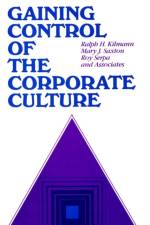av Ralph H. Kilmann
465,-
As revealed by the author's very personal journey, expanding consciousness can indeed be achieved through a dedicated sequence of mind/body/spirit modalities. Dr. Ralph Kilmann candidly shares his earliest traumas and how he then investigated his fears and anxieties by actively participating in a great variety of wellness and healing modalities--such as talk therapy (psychoanalysis), Holotropic Breathwork, Holosync meditation, Network Spinal Analysis (NSA), Neuro Emotional Technique (NET), Vipassana meditation, advanced structural alignment, electro-homeopathy, Pulsor chakra clearing, and many others. Through his intense experiences with all these mind/body/spirit modalities, Kilmann was able to resolve the unintended consequences that stem from specialized (and thus limited) efforts at living an examined life. Indeed, the author illuminates these fundamental lessons: Without already having a fairly conscious mind and a secure ego, you won't choose to work through the accumulated tension and painful memories in your body. And without maintaining an energetically flowing and feeling body, you won't have an easy time directly and continually experiencing the spiritual fabric of the universe. Stated differently, this book illustrates how participating in a sequence of mind/body/spirit modalities can transform childhood traumas into unique opportunities for awakening to your soul's purpose and then living your soul's purpose--which thereby sets you free. The Courageous Mosaic, however, also recognizes how the systems in society play a major role in either expanding or obstructing human consciousness. This book thus considers how organizations and institutions (including public schools, religious organizations, health-care organizations, governments, and workplaces) can be--must be--redesigned for conscious living. If this mission can be achieved, many more people (and not just a privileged few) will be able to achieve a higher level of human consciousness. Indeed, as Kilmann convincingly demonstrates, it's only by expanding consciousness in people--and their organizations--that humankind can wake up and stop war, violence, hatred, poverty, hunger, disease, hopelessness, and the destruction of our planet.











